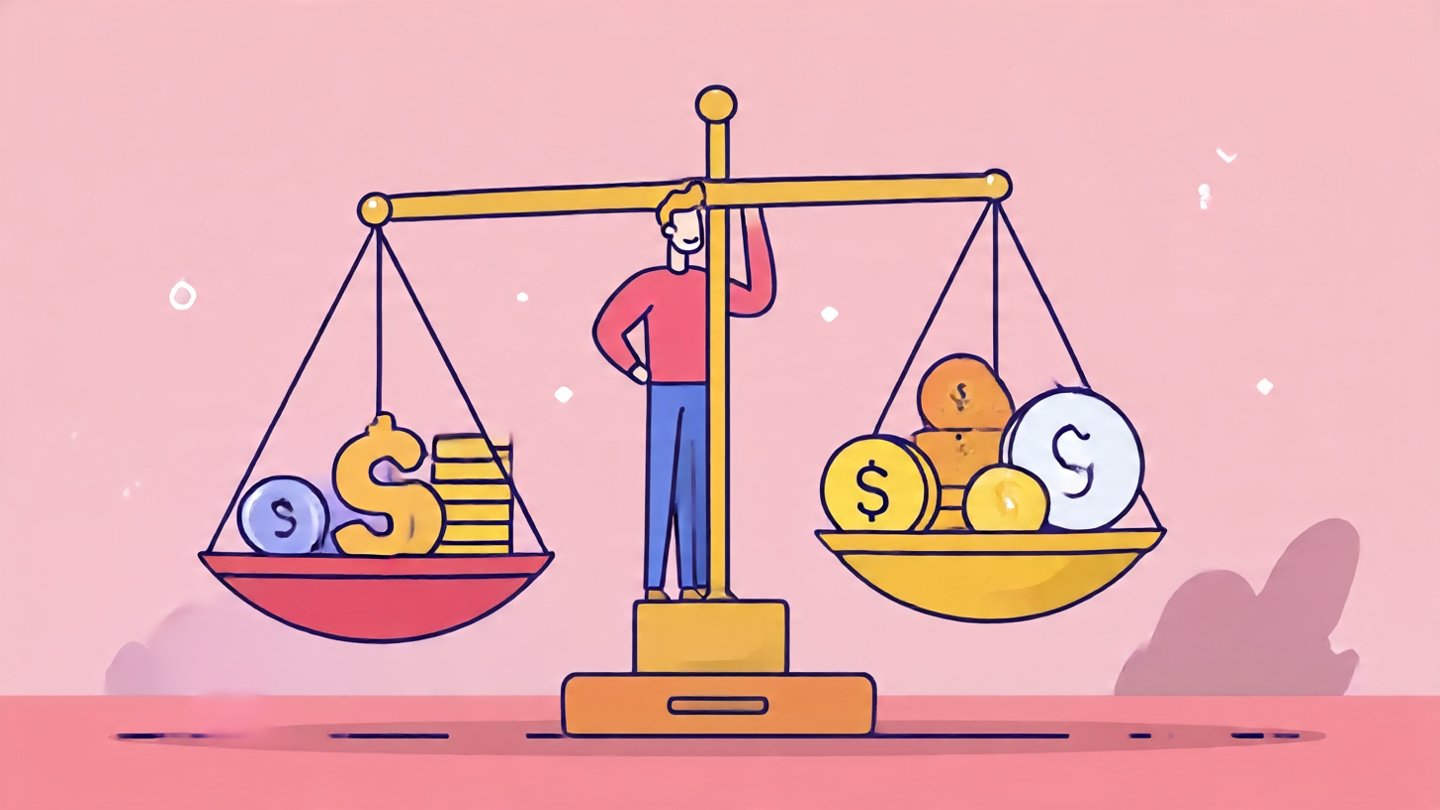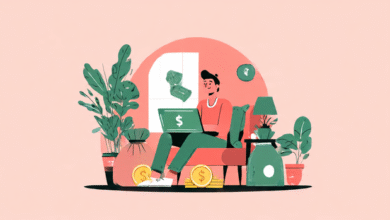Freelance Web Design Rates What to Charge Per Project
Discover current freelance web design rates in 2025. Learn project-based and hourly pricing models, factors affecting costs, and how to set.

Determining freelance web design rates is one of the most challenging decisions a web designer must make when starting or scaling their business. Whether you’re a beginner establishing your first client relationships or an experienced professional commanding premium compensation, the current market landscape is essential for financial success. The web design pricing industry has evolved significantly, with multiple models now available to accommodate different project types and client needs. Reasonably skilled freelance web designers make about $75 per hour, though this figure can vary, as website builder experts estimate that the cost to design a website is $30 to $80 per hour, while development work costs between $100 and $180 per hour. Many factors influence what you should charge, including your experience level, geographic location, project complexity, and the specific services you offer. This comprehensive guide explores current web design cost benchmarks, explains various pricing models in detail, and provides actionable strategies to help you establish rates that reflect your value while remaining competitive in today’s digital marketplace. By market standards and implementing data-driven pricing strategies, you can maximize your earnings while building sustainable client relationships. Whether you’re charging by the hour or per project, this article will equip you with the knowledge needed to make informed decisions about your web designer rates and position your freelance business for long-term profitability.
Web Design Pricing Models
The foundation of setting appropriate freelance web design rates begins with the different web design pricing models available. Each model has distinct advantages and disadvantages, and the best choice depends on your working style, project scope, and client preferences. In 2025, projects move fast and often shift midway, and flexibility in pricing helps match the pace; hourly rates give clients visibility when the scope is fuzzy, but project fees let freelancers work more efficiently without being tied to the clock. Modern freelance designers often use one of three primary approaches: hourly rates, project-based pricing, or retainer models. How each structure works will help you select the most suitable approach for your circumstances and client needs.
Hourly Rate Pricing
Hourly rate pricing remains one of the most popular methods for charging web design services. With this model, you establish a set hourly rate and bill clients based on the actual hours you work on their project. On average, a web designer’s hourly rates range from $30 to $200 per hour, and the project’s total cost will depend on the estimated hours required to complete the work; for instance, if a designer charges $100 per hour and estimates that a project will take 50 hours, the total cost would be approximately $5,000. This approach works particularly well for small projects, ongoing maintenance work, and situations where the scope may change during development. The primary advantage of hourly web design rates is transparency—clients can see exactly what they’re paying for and can easily adjust scope without major financial consequences. However, the downside is that neither you nor your client knows the final cost upfront, which can lead to budget uncertainty and potential disputes.
Project-Based Pricing
Project-based pricing, also called flat rate pricing or fixed price projects, involves charging a predetermined amount for the entire project regardless of how many hours it takes to complete. Project-based pricing is the most common because it’s easier for both parties and includes a flat rate for all the work; clients know how much the design process will cost, and freelancers can charge without worrying about tracking their time; you pay upfront or in milestones, per the freelancer’s working terms. This model provides budget certainty for clients and allows efficient freelancers to benefit from completing work faster. The risk, however, falls on the designer—if a project takes longer than anticipated due to scope creep or unforeseen complications, your effective hourly rate decreases significantly. Many experienced designers prefer this model because, as they become more efficient, they can maintain the same project fee while reducing their time investment.
Retainer and Monthly Pricing
Retainer-based pricing or monthly retainer fees represent another popular approach for ongoing web design services and maintenance work. This model is ideal for ongoing website maintenance, updates, and support after completing the initial project; you’ll pay a fixed monthly fee for a set number of hours or deliverables; monthly retainer fees for web design services range from $500 to $2,000 or more, depending on the level of support required. This arrangement provides predictable income for designers while giving clients the security of knowing their support costs in advance. Retainers work best for clients who need regular updates, content management, or technical support over an extended period.
Current Freelance Web Design Rates by Experience Level

Your experience level is perhaps the most significant factor determining your web design salary and rate structure. The market clearly distinguishes between junior, mid-level, senior, and expert designers, with substantial rate differences at each level. Where you fit in this spectrum helps you position yourself competitively.
Entry-Level Designers
Junior web designers with less than 3 years of experience typically charge $25-$50 per hour, making this the most accessible entry point into freelance web design. Entry-level freelance web designers in 2025 often charge between $20–$40/hour, and a basic 3–5 page brochure-style site might range from $500–$1,000 depending on features and turnaround time. At this level, you’re building your portfolio, gaining experience, and establishing your professional reputation. Many entry-level designers work on simpler projects like small business websites, portfolio sites, or marketing pages.
Mid-Level Professionals
Mid-level web designers with 3-6 years of experience typically charge $50-$100 per hour. At this stage, you’ve built a strong portfolio, developed valuable skills, and likely specialize in certain areas like WordPress design, e-commerce sites, or custom web development. You understand web design project management better, can estimate project timelines more accurately, and deliver higher-quality results consistently.
Senior and Expert Designers
Senior web designers with 6-10 years of experience charge $100-$200 per hour, while expert web designers with over 10 years of experience may charge $200-$500 per hour. These rates reflect not only technical expertise but also strategic thinking, client management skills, and a proven track record of successful projects. Senior designers typically handle complex, high-value projects and may lead teams or mentor junior designers.
Factors Affecting Your Web Designer Rates
Beyond experience level, numerous factors influence what you should charge for freelance web design services. These variables help you justify your rates to clients and ensure fair compensation.
Project Complexity and Scope
The complexity of a web design project directly impacts both the time required and the web design cost. A simple informational website for a local service business requires substantially less work than a complex e-commerce platform or web application. Factors determining whether a freelancer will charge more or less than $75 per hour include whether the website builder will need help from a programmer, developer, or graphic designer, in which case they should charge more to cover the rate that these professionals will charge them. Complex features like custom integrations, advanced animations, e-commerce functionality, membership systems, or database-driven content all justify higher rates.
Geographic Location and Cost of Living
Where you live significantly affects your web design pricing strategy. In areas where the cost of living is higher, web design agencies have to charge more for their labor; generally, agencies in North America, Australia, and Western Europe have higher hourly rates, while median hourly rates in India vary from $15 to $35. Your local expenses—rent, utilities, taxes, and living costs—should factor into your rate calculations. A designer in San Francisco must charge considerably more than one in a rural area simply to maintain a comparable standard of living.
Specialized Skills and Platform Expertise
Possessing specialized technical skills or deep platform expertise commands premium web designer rates. Some web designers offer platform-agnostic design, while others have clear expertise with a specific tool set; for instance, if they have deep knowledge of WordPress or Shopify, expect to pay more since it’s a dedicated platform. Expertise in specific areas like WordPress customization, Shopify store setup, web application development, user experience (UX) design, or conversion optimization allows you to charge higher rates.
Project Deadline and Urgency
Rush projects or tight deadlines often warrant premium pricing. When it comes to web design, factors like deadline impact cost—rush projects or projects with tight deadlines may require more hours and therefore cost more. If a client needs a website delivered in half the normal timeframe, charging a rush fee of 25-50% above your standard rate is reasonable to account for the compressed timeline and potential need to deprioritize other work.
Calculating Your Web Design Rates
Establishing the right web design rates requires a systematic approach that accounts for your financial needs, business expenses, and market conditions. This calculation ensures your rates cover all costs while providing fair profit margins.
Determining Your Target Annual Income
Begin by deciding how much you want to earn annually. For example, if you target $100,000 yearly income, you must then account for business expenses and non-billable hours. To establish your rate, determine what you want to make, such as $100,000 per year, then consider overhead costs like software subscriptions, rent, and accounting fees—adding expenses like overhead of $20,000 and insurance/benefits for $12,000 means you’re looking at a total annual amount of $132,000; if freelance time-tracking reports 1,800 hours worked each year (225 eight-hour workdays), your web design rate should be at least $73 per hour ($132,000 / 1,800 hours).
Accounting for Non-Billable Time
Not all your working hours generate billable revenue. Time spent on proposal writing, invoicing, client communication, marketing, professional development, and administrative tasks must be factored into your freelance web design rates. Most designers allocate 20-30% of their time to non-billable activities, meaning you need to increase your hourly rate accordingly to maintain your target income.
Building in Profit Margins
Your rates must cover not only your salary but also profit for business growth and sustainability. After calculating your base rate needed to cover expenses and salary, add a profit margin of 15-30% depending on your market position and business goals.
Web Design Project Cost Benchmarks
Typical web design project costs help both designers and clients establish realistic expectations and budgets.
Small Business Website Projects
A basic business website could potentially cost between $5,000 and $10,000 to design, build, and write content for. These projects typically include 5-10 pages, basic functionality, content management system integration, and initial SEO setup. The average cost of a basic website created by a freelance website designer is $6,760, according to Website Builder Expert; this cost only covers the first year.
E-commerce and Complex Websites
More complex projects involving e-commerce functionality, custom integrations, or advanced features command substantially higher fees. According to WebFX, web design cost starts from $2,000 to $9,000 for a small business website, and rise up to $6,000 – $75,000 for complex data-driven websites or web apps. E-commerce sites with product databases, payment processing, inventory management, and advanced security requirements require specialized expertise and development time.
Agency vs. Freelancer Pricing
Expect to pay $25–$80/hour for freelancers and $150–$199/hour for agencies. The higher agency rates reflect the overhead costs of maintaining teams, office space, and infrastructure, though some clients prefer agency services for complex projects requiring multiple specialists.
Pricing Strategies for Different Project Types

Different project types require different web design pricing approaches and strategies.
Landing Pages and Microsites
A basic 3–5 page brochure-style site might range from $500–$1,000 depending on features and turnaround time. These focused projects work well for project-based pricing since the scope is generally well-defined and limited.
WordPress and Template-Based Sites
Websites built on WordPress or using page builders like Elementor typically cost less than fully custom sites. Web design companies that use website builders charge lower hourly rates than those that design the website from scratch, as website builders can be a huge time- and cost-saver.
Custom Development and Web Applications
Custom-built websites and web applications demand premium rates due to the specialized development work required. These projects justify higher hourly rates ($100-$200+) because they require advanced programming skills and longer development cycles.
Handling Scope Creep and Revisions
Scope creep—when clients request additional work beyond the original agreement—is a major profitability challenge in web design services. Protecting your rates and profitability requires clear policies.
Defining Revision Limits
Unlimited revisions are not standard; most freelancers include 1–2 revision rounds in their initial quote; additional revisions are charged hourly or added as a new mini-project. To avoid issues, define revision terms in writing before starting, for example: “Includes up to 2 rounds of feedback per page”.
Charging for Additional Work
In hybrid models, the core project is priced as a flat fee, and anything outside of scope—like last-minute edits or plugin troubleshooting—is billed hourly. Establishing clear policies about what constitutes additional billable work prevents disputes and protects your profitability.
Tips for Setting Competitive Web Designer Rates
Establishing competitive web design rates requires balancing market conditions with your value and experience level.
Research Your Market
Compare rates from similar designers in your geographic region and niche. Review rates on platforms like Upwork, Fiverr, and industry-specific sites to understand current market rates. However, don’t automatically match the lowest rates—consider your experience, portfolio quality, and specialization.
Increase Rates Regularly
It’s actually common practice to review prices annually, and you may want to increase them if the cost of living increases due to inflation; many clients will expect or at least be open to discussion on price rises, as they may be raising their own prices each year. Plan to increase your rates by 5-15% annually to account for inflation and your growing expertise.
Highlight Your Value Proposition
Don’t compete solely on price. Instead, emphasize your unique value—specialized skills, faster delivery, superior customer service, or unique design approach. Clients willing to pay premium rates for quality and reliability exist in every market.
Offer Multiple Pricing Tiers
Consider offering different service packages at different price points. A basic package with essential features might start at your standard rate, while premium packages with enhanced features, additional revisions, or faster turnaround times command higher prices.
Common Web Designer Rate Mistakes to Avoid
New and experienced designers often make pricing errors that undermine profitability and sustainability.
Underpricing Your Services
Many designers, especially those starting out, charge rates well below market standards. This creates two problems: it undervalues your work and sets unsustainable expectations with clients. If a designer charges $40/hour on work that takes 10 hours and should rightfully be $100/hour, they’re leaving significant money on the table.
Not Accounting for All Expenses
Forgetting to factor in software subscriptions, professional development, insurance, taxes, and overhead leads to rates that don’t actually cover your costs. Freelance life involves software subscriptions, rent, and accounting fees; calculating freelance rates that account for all your expenses is key.
Ignoring Experience Increases
Failing to raise rates as you gain experience and develop better systems means you earn the same rate for increasingly complex, high-value work. Regular rate increases are essential for building a profitable, sustainable freelance business.
More Read: Best Freelance Websites for Beginners That Actually Pay Well
Conclusion
Setting appropriate freelance web design rates requires balancing multiple factors, including your experience level, project complexity, geographic location, market demand, and personal financial needs. Current market data shows that web design pricing ranges from $20-$500+ per hour, depending on expertise and project type, with typical project-based fees ranging from $500 to $25,000+. The most successful freelance designers use a combination of strategies: they research their market thoroughly, calculate rates that cover all expenses and provide healthy profit margins, implement clear policies to manage scope creep, and increase rates regularly as they gain experience and expertise.
Whether you choose hourly rates, project-based pricing, or retainer models, the key is ensuring your web designer rates reflect your true value while remaining competitive in your market. By implementing the strategies and benchmarks outlined in this guide, you can establish rates that attract quality clients, support a sustainable business, and reward you fairly for your creative expertise and technical skills. Start by calculating your target income and necessary expenses, compare your rates to market standards for your experience level, and adjust regularly as market conditions and your skills evolve. Remember that premium rates are justified by superior results, reliable delivery, and exceptional client service—focus on delivering value, and clients will be willing to pay premium web design rates for your expertise.





